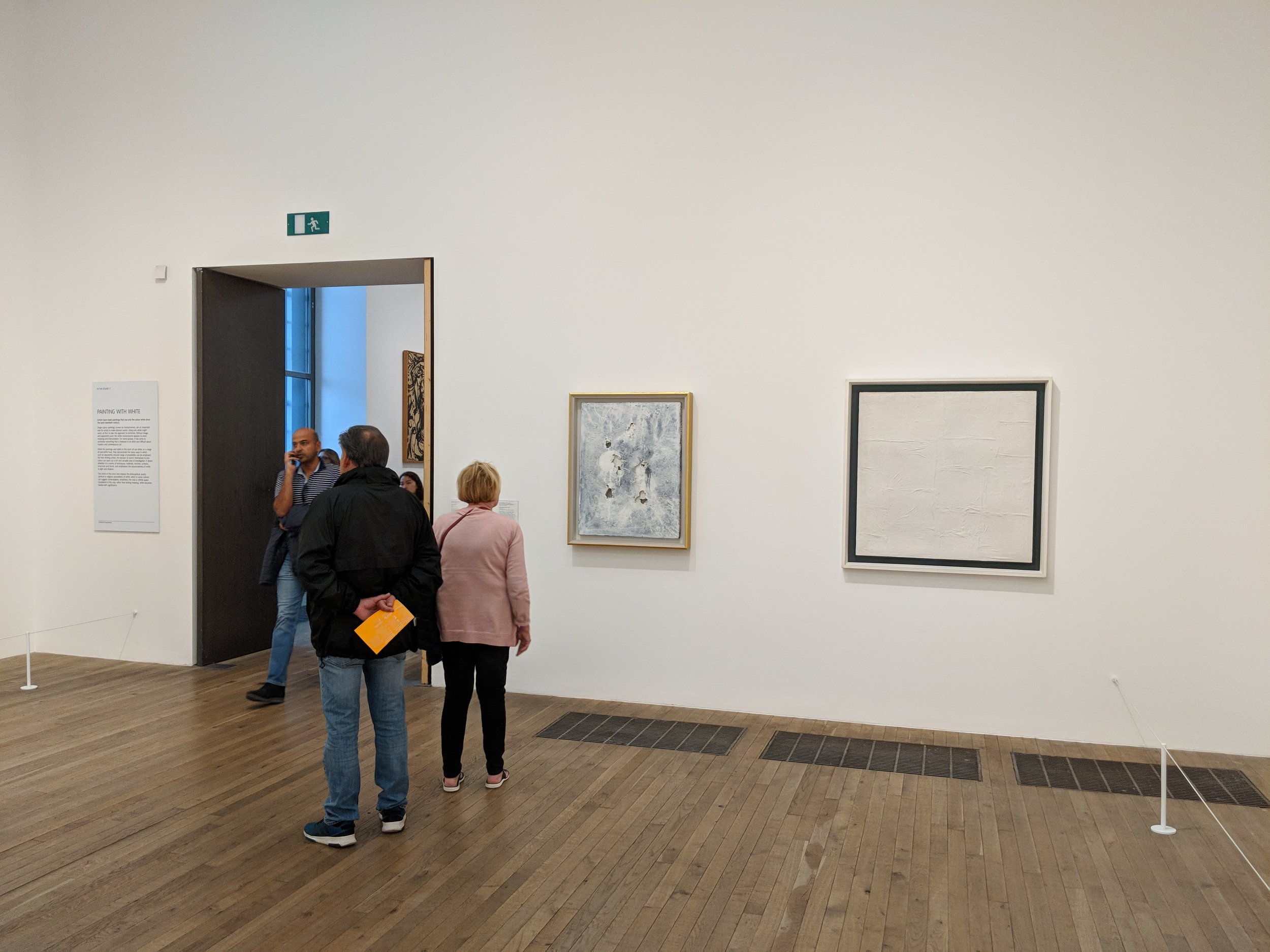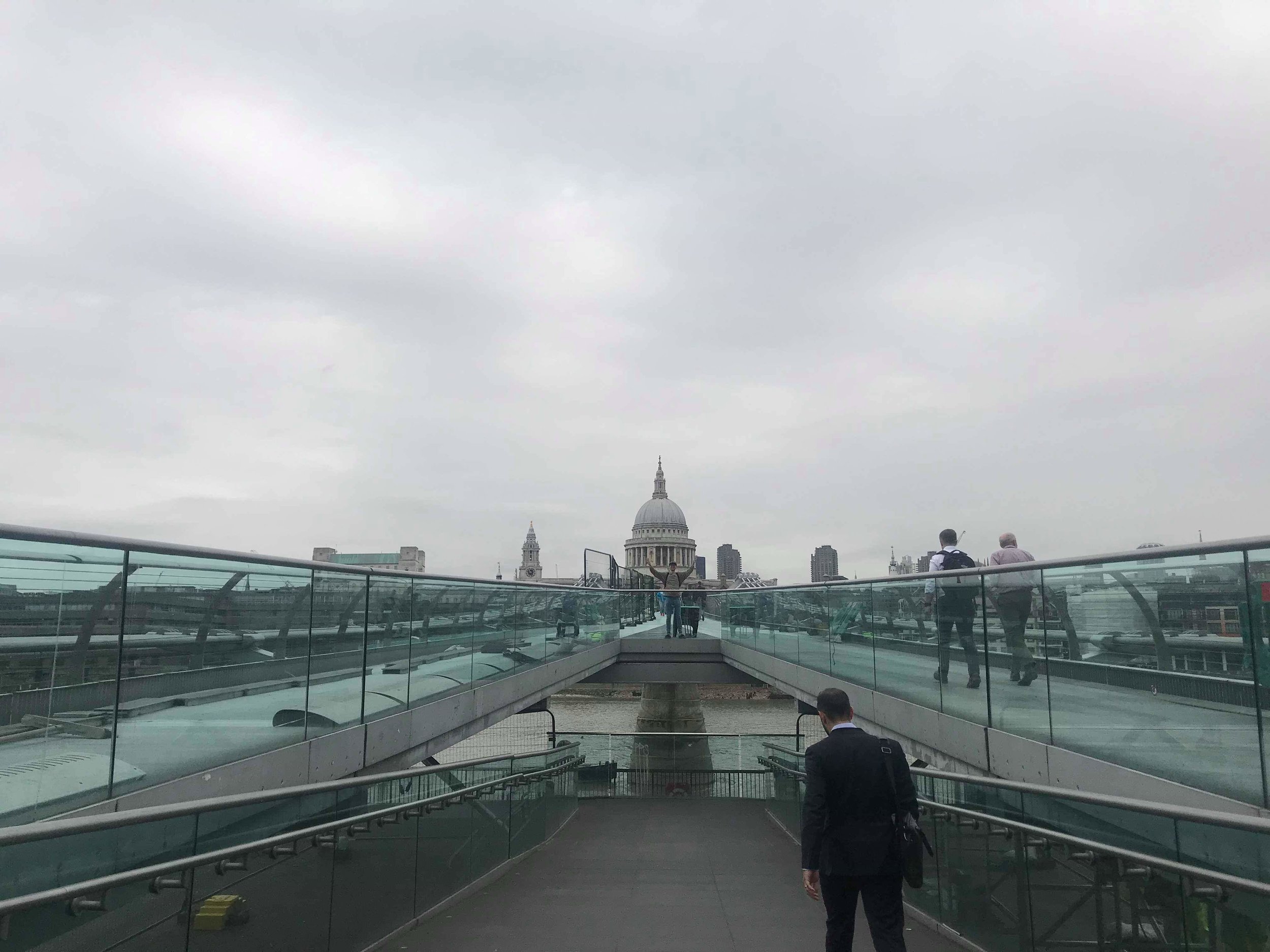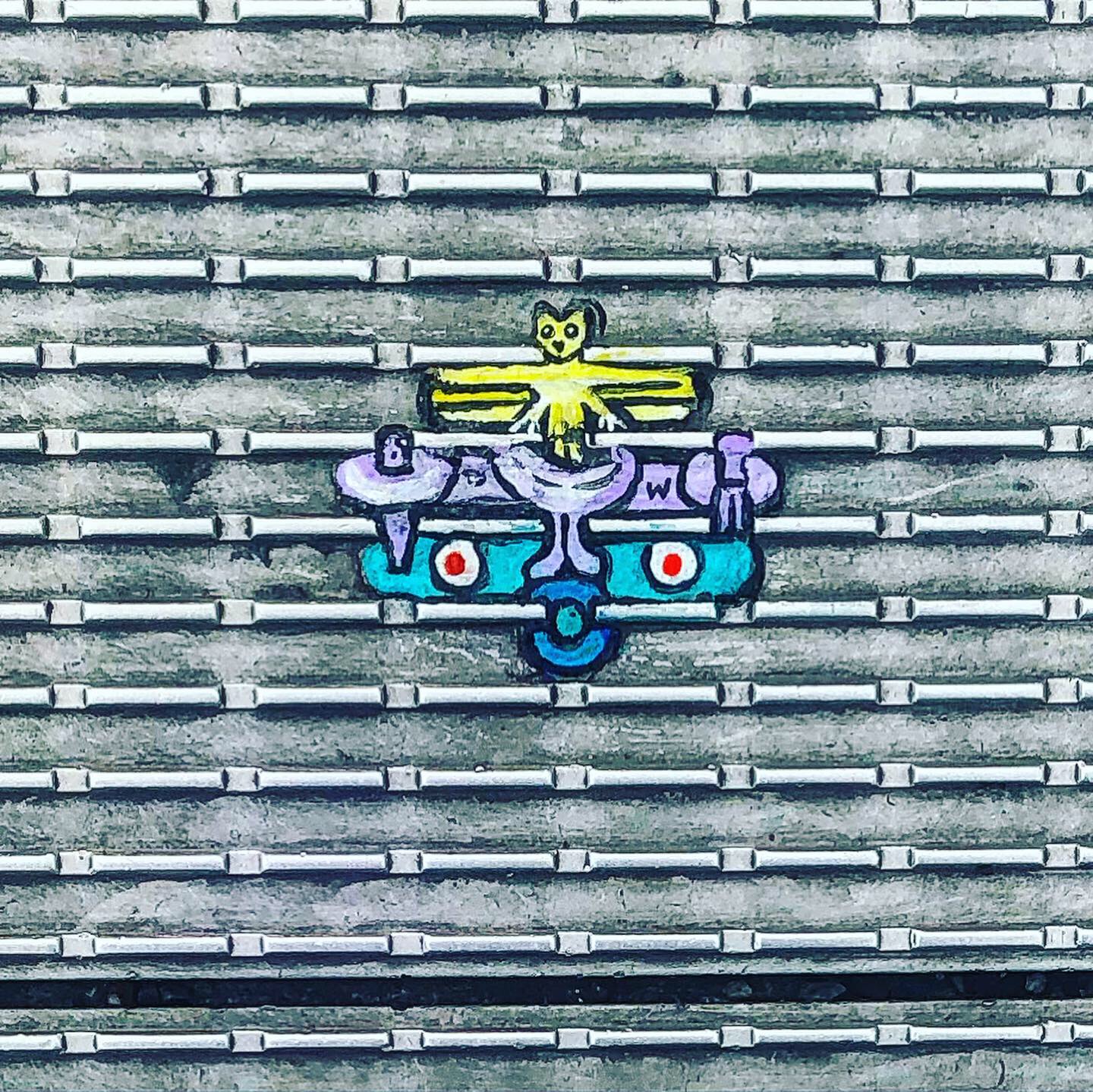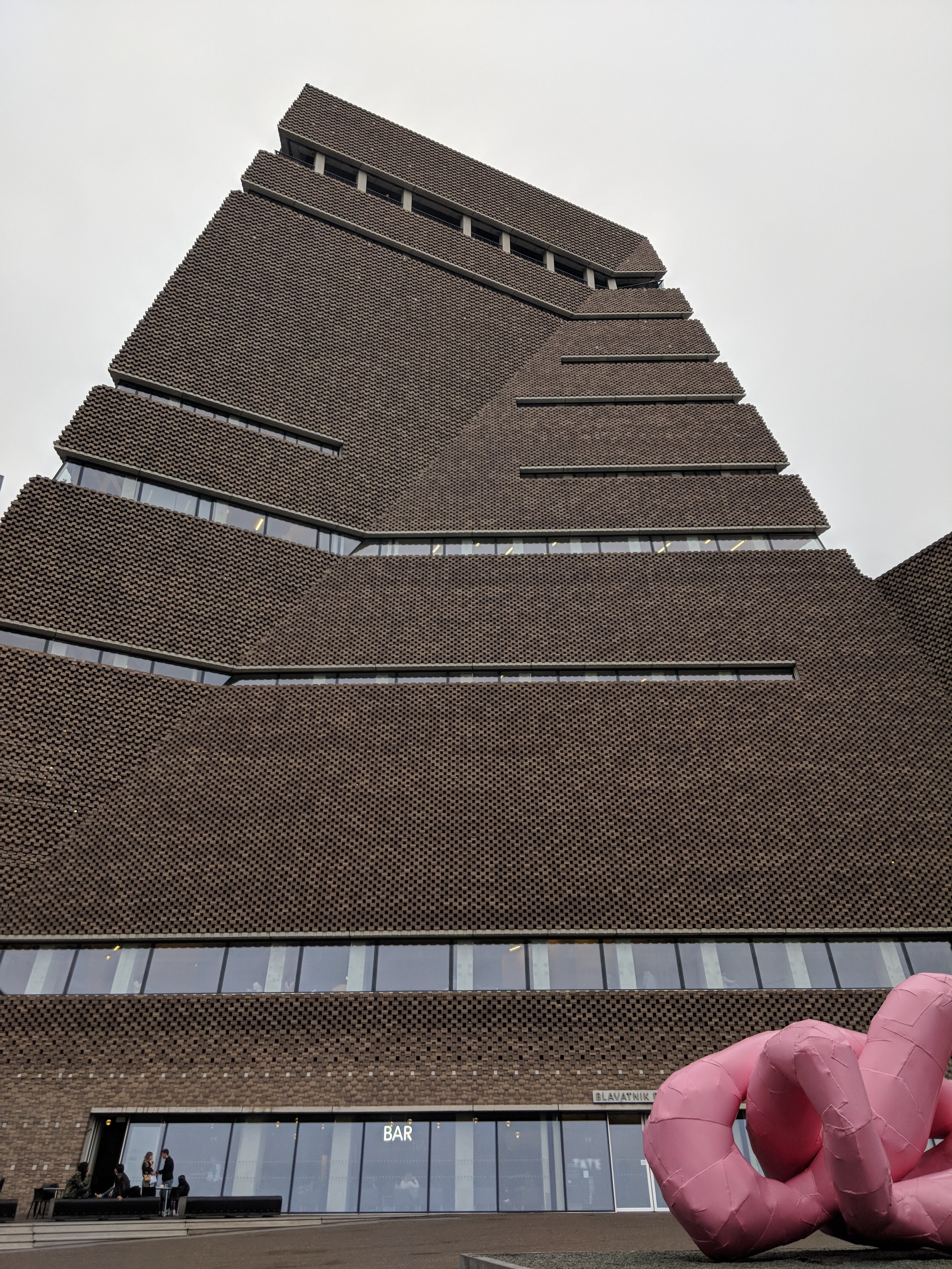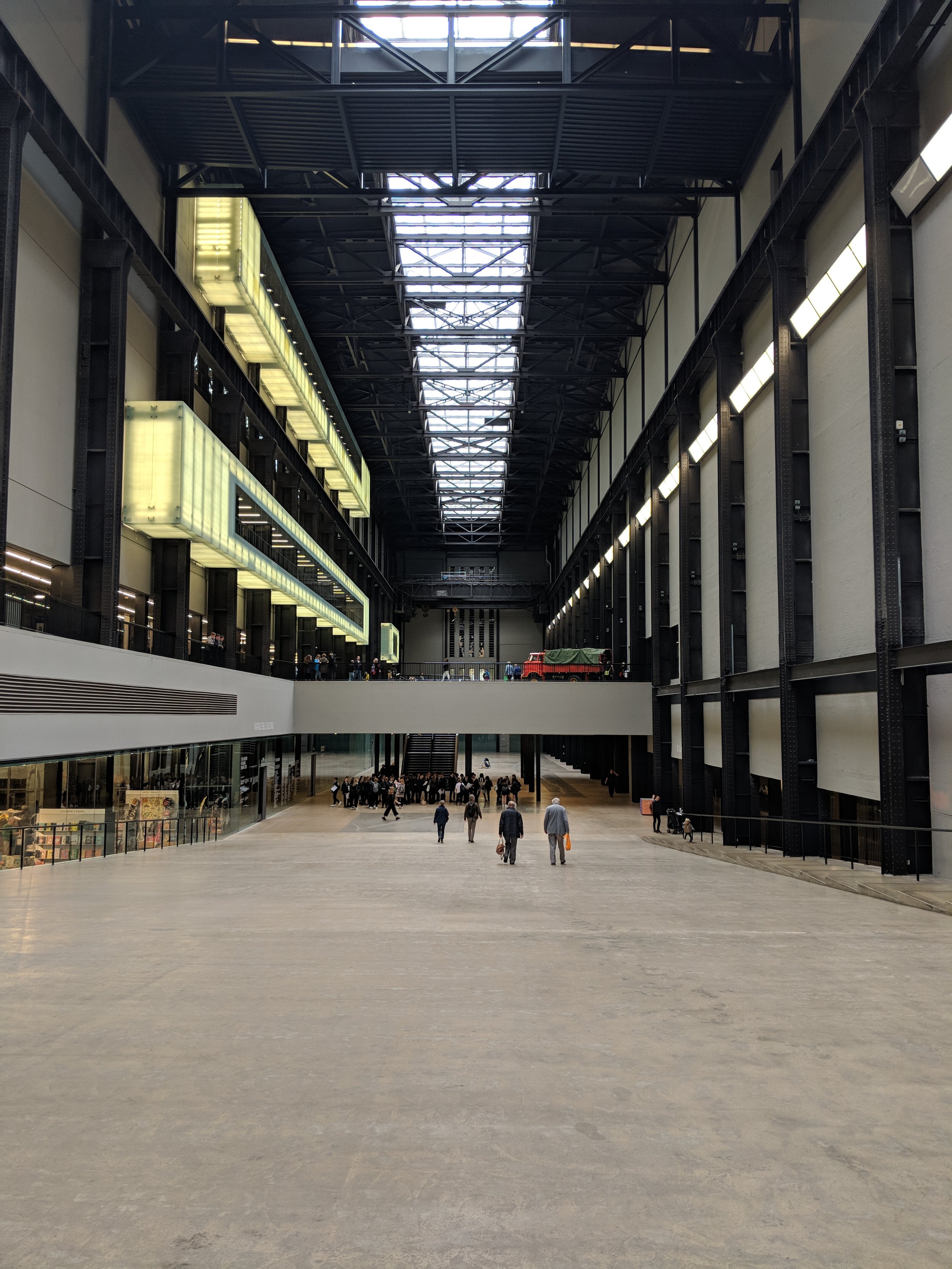Tell us a little bit about yourself—your background, major program of study, reasons for taking this trip, and anything else interesting you want to share (maybe something people might not know about you).
Ronald is a fashion student in KPU’s Wilson School of Design entering the final year of his program. Here he is with Mel hanging out at the hostel.
Hello! My name is Ronald, and in the fall I will be going into my fourth year of the Fashion and Technology program at Kwantlen Polytechnic University’s Wilson School of Design. Something I constantly explore in my practice as a fashion student is the intersection of art and design - how are they different or similar? When, where, and how can they come together? Although my passion is, and always will be, fashion and design, a part of me has always longed to have a fine arts education - I took art courses all throughout high school, but decided fashion was what I wanted to pursue in post-secondary and as a career. It has also been a goal of mine to study abroad so this particular field school was the perfect opportunity for me to check off multiple things on my list: exploring the relationship between art and design, living out my dream to be an art student (at least for a little while), and going abroad.
I envision a creatively fulfilling career for myself and in the process of working towards a goal, I do not want to limit myself to either an artistic or design approach. I want them to work in relation to each other and belong in the same space. For the longest time I have only seen these crossovers through images and readings, other than an occasion trip to local galleries at home, so it will be really exciting to experience art and design on a larger scale, in context to historical tensions and consumerism, beyond a page from a book or a computer screen.
What has met or exceeded your expectations or surprised you about London (or Venice) so far?
What has surprised me most about London, so far, is how easy it is to get from point A to B, and everywhere in between. Everywhere we go is within walking distance or just a quick trip on the metro. We have only been here for a week but I already feel super comfortable exploring the city on my own - I took the metro by myself third day into the trip! As this is my first time travelling without family, I knew I would not have anyone to rely on or to look after me and I have had to adjust really quickly to being on my own. London is much bigger than Vancouver, so I worried I would have troubles getting around, but this has not been the case. Getting a good data plan definitely helped, and although there will be a bigger communication barrier when we are in Venice, I think the confidence I have gained from being on my own in London will transfer over. That being said, I have hopped on an eastbound train when I should have been on the westbound one, and turned a few corners before I realized I was going the wrong direction on multiple occasions!
Another thing that has surprised me about London, and this part of the world in general, is how many kids go to galleries and museums as part of their education and upbringing. It is truly jaw dropping to witness a group of children sitting on the floor of the National Gallery or the Tate Modern looking up at historical and contemporary works of art, taking notes and sketching. With this, I could not help but feel like I missed out on something in my childhood, as I wish more significance was placed on studying art and culture in school. Within art, there are so many cultural clues that inform us on the implications of our past and possible futures.
Give us some insight into your assigned artwork from the Tate Modern. After seeing the work in person in London (and any other related art from the same artist or art movement associated with the assigned work), what struck you most about it and/or how did the artwork’s form, content, and context shift for you when seeing it.
Barbara Kruger’s work Who owns what? (2012) is located in the Media Networks exhibition at the Tate Modern
My assigned artwork in the Tate Modern is Who owns what? (2012) by Barbara Kruger. From my initial reading of the object and the assigned written work on the piece, I found that Kruger deals with social constructs of identity and gender, as well as commentary on consumerism and our culture as a whole. Her design background and experience in editorial work lends to her collage style, the layering of black-and-white images and bold typeface which is comparable to advertisements. Being a design student with some visual arts background, I can relate with Kruger’s process. By disrupting the metaphorical space of something commercial and familiar to the viewer, Kruger aims to uncover the power behind tensions that society is either unaware of avoid. In Who owns what?, it is clear that the question Kruger poses is directed at the viewer, the consumer. The subject of the piece is not specific, so whoever is viewing the work will interpret the meaning differently; for me, it makes me question my behaviours as a consumer as well as those who dictate consumer needs and wants. From the perspective of notions on identity, I also interpreted the question as ownership of ourselves; are we in control of our thoughts and actions and are we accountable for them?
The themes that Kruger touches on immediately resonated with me, as identity, gender, and consumerism are in my rotation of concentration and research. Although this connection to the assigned artwork was possible from just seeing it on a piece of paper and on a screen, seeing it in person for the first time puts into perspective how powerful the work actually is. Who owns what? is currently showcased in the Media Networks exhibit, which comments on the impact that mass media and digital technology has on contemporary art. Kruger’s piece pulled me into the room, literally and figuratively, and can be seen from the entrance to the room. The size of the piece speaks to the already confrontational characteristic and message of the work, making the work seem even more intimidating. By being a standalone piece, I was forced to look at just this one piece before I moved on to the next room. There is also a hypnotizing aspect to the scale of the work that made it hard for me to pull my gaze away from it, and when I finally did, the question it raises seemed to linger on for a bit longer than I anticipated. With this, I think Kruger is trying to bring awareness to the social tensions that make us uncomfortable and, ultimately, numb. By being more conscious of what makes us uncomfortable internally and externally, we can become less desensitized and more engaged.
How did you approach the creative task of responding to your assigned artists in studio? What were your challenges as an artist to be in dialogue with the artwork and artist? Would you do anything differently now that you have seen the work in person?
Ronald interacting with his assigned Anthea Hamilton work, Karl Lagerfeld Bean Counter (2012) at Tate Britain
For my studio projects, I was also assigned Karl Lagerfeld Bean Counter by Anthea Hamilton in 2012, shown at the Tate Britain. With Hamilton’s work, I drew from themes that stuck out to me based on a blind reading of the piece and research on the artist. Similar to Kruger’s work, I found that Hamilton also challenges the comfort of the audience by subverting familiar objects, commenting on notions around identity and gender. Karl Lagerfeld Bean Counter depicts a young, suggestive image of the late designer along with beans and potatoes, questioning the emphasis we put on certain desires. I found Lagerfeld’s pose to be both sensual and egotistic. I felt invited in but also disgusted by his standoffish demeanour. With this, I also noticed masculine and feminine qualities in the work.
What I found difficult in responding to Hamilton’s work was defining the line between being in conversation with the assigned artwork while also fulfilling my own needs as an artist and designer, specifically in its overall aesthetic and the narrative I was trying to tell. Playing with the contrast of things that are both alluring and repulsive, I did a series of self portraits that document the parts of my identity and self discovery that makes me comfortable and uncomfortable (image below left). Like the ambiguous quality of Hamilton’s work, the blurring of gender in my photographs push for the audience (in this case, my peers) to come to their own conclusions.
In response to Kruger’s work, I did an installation of thrifted clothing, undergarments, and accessories to explore the role that consumerism plays in our identities (image above right). Being a fashion student, I am aware of the impacts that the industry has on the environment and wanted to comment on consumerism from that perspective, where goods are seen as disposable. To tie back into my previous project of self portraits, I used stereotypically male and female garments to comment on the fixation that our society still holds on gender. The most challenging part about responding to Kruger’s work was that my aesthetic is much tamer and more calculated. Coming from an intense, practical design program, a lot of emphasis is placed on editing and being attentive to the smallest of details. Although I think I could have been more raw with my project, I am very proud of the end result because it was really creatively rewarding to do something that I felt was quite ambitious given the timeframe.
Today’s activity was located at White Cube Gallery and smaller galleries in Shoreditch. What were your impressions? What will you take away of the experiences of this day? What are the most memorable moments for you?
Compared to the “old” objects displayed at the Victoria and Albert Museum that we saw earlier in the trip, today we saw more contemporary artworks in the more trendy parts of London. Jumping between the old and the new each day is refreshing, our activities mimicking the physical landscape of London. We started the day at White Cube Gallery on Bermondsey Street, where works by Zhou Li and Sarah Morris were being displayed. I particularly liked Li’s work because of her colour palette and the mix of soft and hard strokes. Morris’ multimedia exhibit was also quite engaging. Another aspect of White Cube that I enjoyed was its architecture and as much as it complimented the works displayed inside, the building was a piece of art itself.
Ronald, Alison, and Elizabeth taking a closer look at a Zhou Li painting at the White Cube Gallery
Before heading to Shoreditch, we stopped by Borough Market to visit The Anchor, an eight hundred year-old pub! There was a moment where I felt at home, as the market looked so much like Granville Island in Vancouver. After a few pints of Guinness, a cheeky conversation with the bartender, a small lunch and a quick stroll around the market, we were off again. The weather has had its ups and downs this week, but I don’t really mind the rain as it feels like home.
I was really excited to head back to Shoreditch as I was there with a friend a couple days before. Out of all the areas we have been to so far I think Shoreditch might be my favourite. It was interesting to see what I had missed the first time around, and by all the galleries and shops that are in this area it seems like I missed quite a bit. One of the galleries we visited was displaying works by Frank Bowling, and I thought it was interesting that he was showing works in a small, private gallery while also having a large retrospective exhibit at the Tate Britain. Another highlight of visiting the Shoreditch galleries was a Lola Flash exhibit, which explored the experiences of genderqueer and non-binary people through a series of portraits.
Ronald, far right, enjoying pints with the group at The Anchor, 800 year old English pub on the banks of the Thames
The day continued with a bit more exploring in Shoreditch (and sporadic photoshoots with my recent purchase from Saatchi Gallery the other day), a trip to Oxford Circus and some shopping, ending with a very lovely dinner at an Indian restaurant with the most eccentric server… I feel like I am forming genuine bonds with my peers. Although I knew I would make friends quickly during this field school, I came in feeling like the odd one out in a group of mostly fine art majors. But, feeling like an outsider quickly faded. With each day’s activities I become more acquainted with the city and I look forward to the week ahead of me!










































